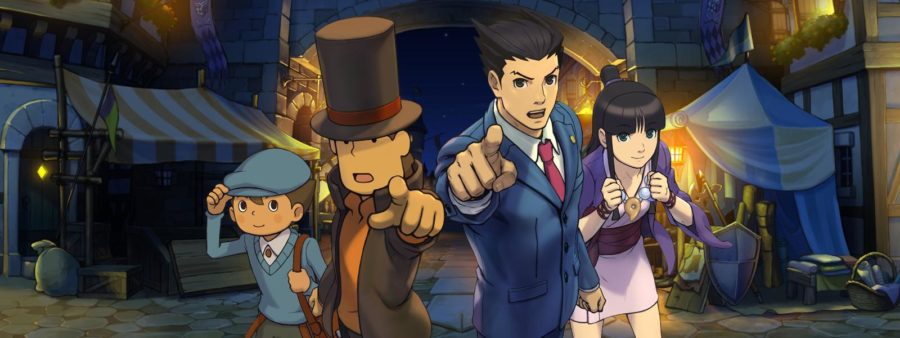4/5
In the “Professor Layton” game series, players assume the role of Professor Hershel Layton and solve various logic puzzles to unravel a greater mystery. In the “Ace Attorney” series, players gather clues and cross-examine colorful characters as defense attorney Phoenix Wright to prove his client’s innocence.
Both franchises are exclusively made for the Nintendo DS (and later, the 3DS) and have gained a small but loyal fanbase.
Apparently, that’s reason enough for a crossover game. “Professor Layton vs. Phoenix Wright: Ace Attorney” for the 3DS is somewhat of a misnomer, as the main characters never come into conflict. It’s also unashamedly, if unsurprisingly, geared toward fans of both series, and suffers a bit from an uneven playing style. It has hallmarks of both series; great writing, an intriguing plot and memorable characters.
The plot starts out with both sets of characters independently coming to the defense of a mysterious girl named Espella; Layton and his eager young apprentice, Luke Triton, protect her against strange attackers who appear to use magic. Wright and his assistant, Maya Fey, later prove her innocence in court. Both parties are then transported to Espella’s home, the medieval town of Labyrinthia, where magic is real and witch trials are commonplace. Layton and Wright must team up to discover the town’s secrets while protecting the innocent from horribly burning to death.
For a crossover, the gameplay is surprisingly segregated. With one or two notable exceptions and small details like the ability to use “Layton’s” hint coins when you’re stuck in a trial, solving puzzles and attending trials are very distinct parts of the game. It’s much less a blending of game styles then portions of each snipped and pasted together. The puzzles, noticeably much easier than in “Layton,” add to the problem. The trial scenes come with a difficulty level that surpasses the last “Attorney” game and new gameplay where you interview multiple witnesses at once.
The changes to the trials are interesting and welcome, but also further illustrate how the puzzles suffer. On the bright side, the puzzles replace the tedious investigations of the “Attorney” games.
While the gameplay doesn’t really cross over, the characters certainly do, and it’s here that the real joy of the game comes to light. Wright’s group may not meet Layton’s until Labyrinthia, but when they do, they’re inseparable. Layton’s gentlemanly nature and Wright’s awkward earnestness contrast nicely with each other, and the youthful exuberance of both Maya Fey and Luke Triton add an extra sense of fun. There’s even a short segment where Triton and Fey have their own small puzzle-solving adventure.
While it’s a little disappointing that no other established characters from either series make more than a cameo appearance, the original characters do more than just make up for it. From the mysterious waif Espella to the knightly Inquisitor Barnham to the town drunk Emmer Punchenbaug, the characters are all distinct and entertaining in their own way. Especially notable are the menacing High Inquisitor Darkclaw and the enigmatic Storyteller, the latter of who writes the stories that determine the fate of everyone in town.
One of the game’s major problems is there’s little replay value. This is also a problem with both parent series — the trials are heavily scripted, so there’s no reason to replay when you’ve beaten them. By the same token, there’s little reason to redo puzzles when you already know the answer. This problem is alleviated a little in the free downloadable content that’s available after you beat the game, although so far each downloadable chapter has consisted of one puzzle following a humorous skit with maybe some concept art thrown in for good measure. It’s not much, but a little more gets released every week, so it’s at least motivation to plug in the game cartridge again for a little while.
People who aren’t fans of either series won’t get as much out of this game as fans of both, and fans who prefer one series over the other might find it annoying to switch gameplay styles. However, “Professor Layton vs. Phoenix Wright: Ace Attorney” remains a worthy entry to both franchises and can serve as a gateway for curious newcomers to check out both game series.





